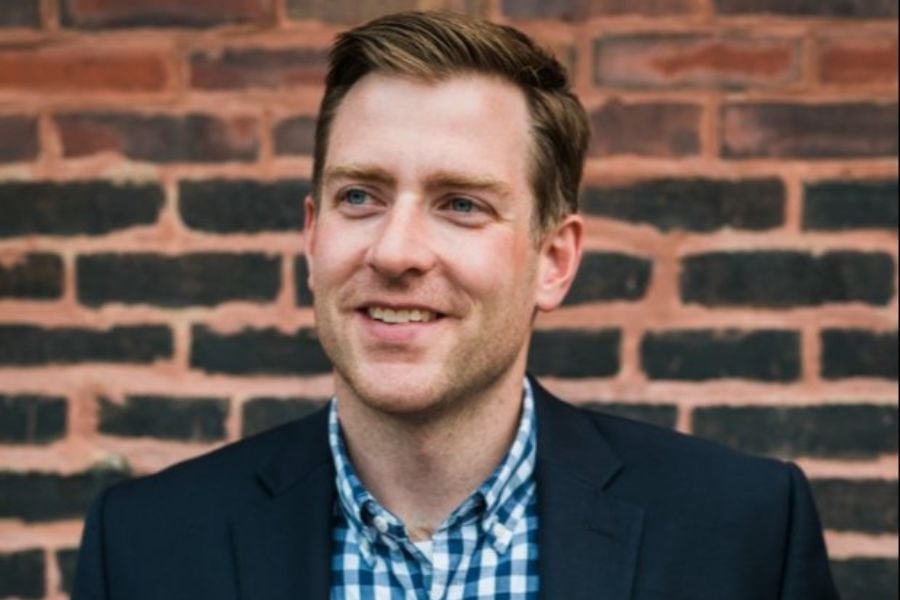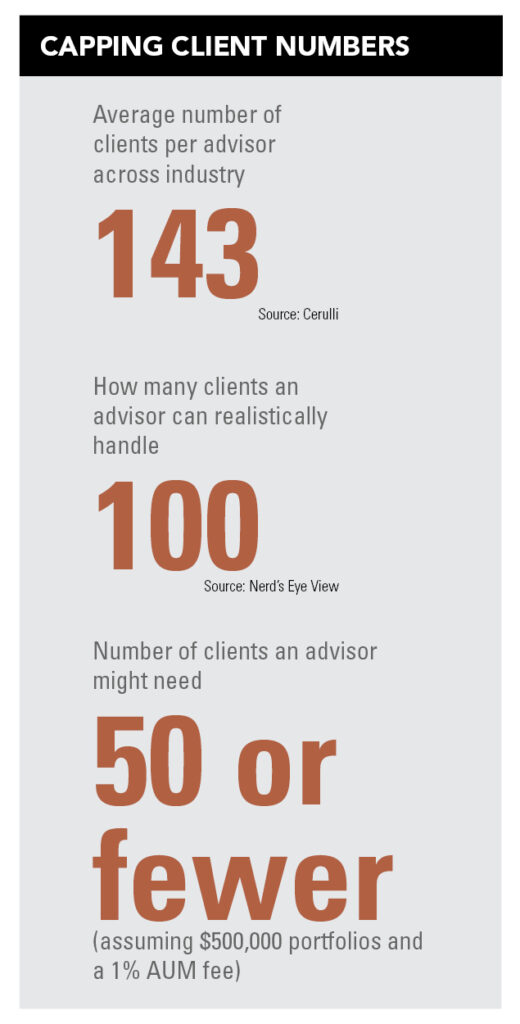

Go to Fident Financial’s website, and the contact information for it and company founder Jeremy Walter is difficult to find.
That isn’t because Walter is antisocial or didn’t put enough thought into his site. He just isn’t taking any new clients, having reached a capacity four years ago that he says is enough – 75 households.
“This is one of my favorite things to talk about,” said the Lancaster, PA-based advisor, who prioritizes his time with family over growing the business beyond what he can handle alone. He isn’t hiring junior advisors, nor looking to acquire other firms – and he acknowledges that isn’t necessarily the right business path for everyone. His firm’s assets under management are about $45 million, he said.
“This is what works for me. It isn’t prescriptive of what anyone else should do,” he said. But for those who might be wondering how and when to set limits, “make it an intentional decision and not a default setting that’s never been examined,” he said.
And, of course, limiting the number of clients and still having enough revenue can mean having high account minimums – the bigger that number, the fewer clients one might need.
On his Nerd’s Eye View blog, Michael Kitces in 2018 posited that an advisor can’t realistically have meaningful relationships with more than 100 clients. Those who work with affluent families and are paid on average $5,000 each by 50 clients would get $250,000 in gross revenue and could take home $200,000 in pay, Kitces noted.
That kind of limit resonated with Walter, who cited Kitces’ thoughts as a motivator. Not all clients he works with have large enough accounts to pay for his services through an asset-based fee alone, so he charges a subscription fee, prorated for smaller accounts, he said.
Similarly, Ashlee deSteiger, founder of Gunder Wealth Management, doesn’t have account minimums for clients but does have a fee minimum. She runs the advisory business with her husband, Joe, and the two work with a total of about 100 households, representing $90 million in assets. They aren’t planning to expand – bringing on another advisor might not be fair, given the dynamics of the couple’s ownership of the firm – and they have a limit of 120 clients, deSteiger said.
“We keep the firm to just the two of us as opposed to continuously hiring,” she said. “It really helps us home in on our niche.”
A drawback of capping the number of clients means that eventually they will have to turn away good prospects, although they can also be more selective in the meantime, she said. They work primarily with people who are 10 years or more away from retirement age.
“It makes us reevaluate our value proposition for clients every year,” she said.
Another advisor, Will Brennan, founder of Park Hill Financial Planning & Investment Management, has brought on 15 clients in the year since he launched the firm. He is planning to cap his client roster at 30 – and it helps that his bread and butter is the $1 million to $5 million range, he said.
With a background in the brokerage industry prior to working in the RIA world, he sees a familiar pattern emerging, where advisors are recreating practices seen at some wirehouses.
“What’s really interesting is that [some RIAs] are telling their $2 million and $5 million clients, ‘You can call into our call center. You won’t have a committed advisor.’”
But there are plenty of smaller RIAs where that isn’t the case, he said. And telling prospects up front that he has a client limit and that they will have good access to him is a big attraction, he said.
“I’m not trying to build the next J.P. Morgan. I like to spend my time being an advisor – so I’m going to spend my time doing that,” he said. “My barometer of whether there is capacity and room is: Am I able to go out and meet you for lunch?”
That theme can resonate with people who are figuring out how much they will need to retire, change careers, and be comfortable enough to spend their time how they would like to.
“One of the key purposes of working with an advisor or a financial planner is finding your ‘enough.’ It’s different for everybody,” he said. A 30-client limit “is a reflection of my and my family’s enough … clients see that and feel a lot more comforted.”
Even so, he reserves the right to change his mind – as do most of the advisors who spoke with InvestmentNews. That could include hiring support staff in the future or raising fees, he said.
Michael Izbotsky, owner of From Planning to Living, said that his cap of 50 clients adds an “exclusivity factor” that many appreciate. Since launching his firm in 2018, he’s brought on 40 households, with a total of about $4 million. To support his revenue, he charges a flat fee for financial planning for those who don’t meet an asset minimum, he said. He offers three designated check-ins with clients per year, as well as meetings for unexpected events that arise, he said.
“I’m able to give each and every client the same golden standard of service, rather than bringing on 75 clients or households and maybe giving them 75 percent to 80 percent of the top-notch service,” he said. “I want to be able to give them the most attention that I can.”
When Walter stopped taking on new clients, he noticed something that is explained by human nature – they want what they can’t have. It opened the floodgates, with more people asking to hire him, he said.
“A lot of advisors say they’re not taking on new clients as sort of a marketing tactic, and it’s sort of a good one,” he said.
Still, he resisted expanding. He even stopped going to conferences because of the time it took away from being with family. That has led to conversations with clients about what “enough” means for them, he said.
“It’s so much more than a number on a spreadsheet,” he said. “We’re already doing this in some capacity as what we do as financial advisors – it’s just taking it to another level.”
The “why” people have in reaching their “enough” can vary, whether it’s family time, getting good at a sport, or volunteering, for example.
“The ‘why’ doesn’t so much matter. It’s that we have a pretty cool option in our industry that we can dial up or down how much revenue we have,” Walter said. “Time is the most valuable resource. It’s not renewable.”


Relationships are key to our business but advisors are often slow to engage in specific activities designed to foster them.

Whichever path you go down, act now while you're still in control.

Pro-bitcoin professionals, however, say the cryptocurrency has ushered in change.

“LPL has evolved significantly over the last decade and still wants to scale up,” says one industry executive.

Survey findings from the Nationwide Retirement Institute offers pearls of planning wisdom from 60- to 65-year-olds, as well as insights into concerns.
Streamline your outreach with Aidentified's AI-driven solutions
This season’s market volatility: Positioning for rate relief, income growth and the AI rebound
